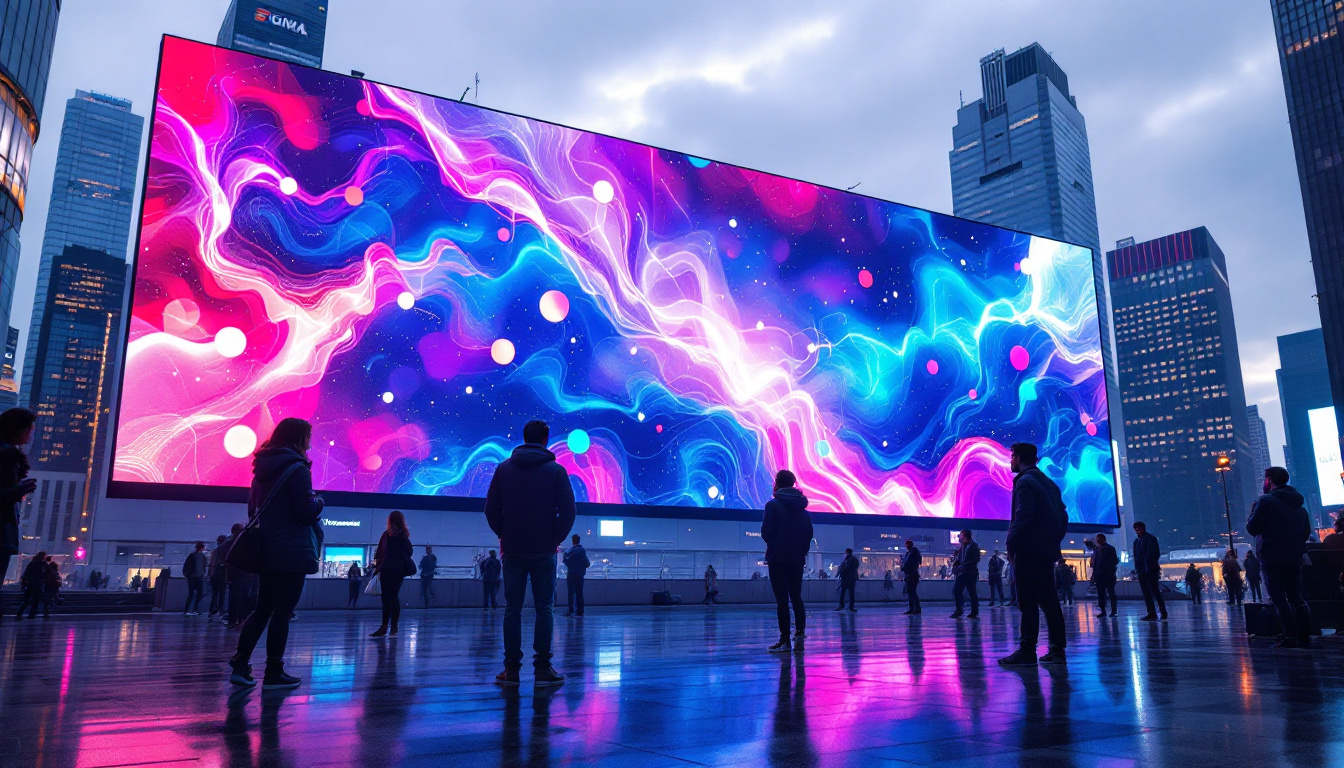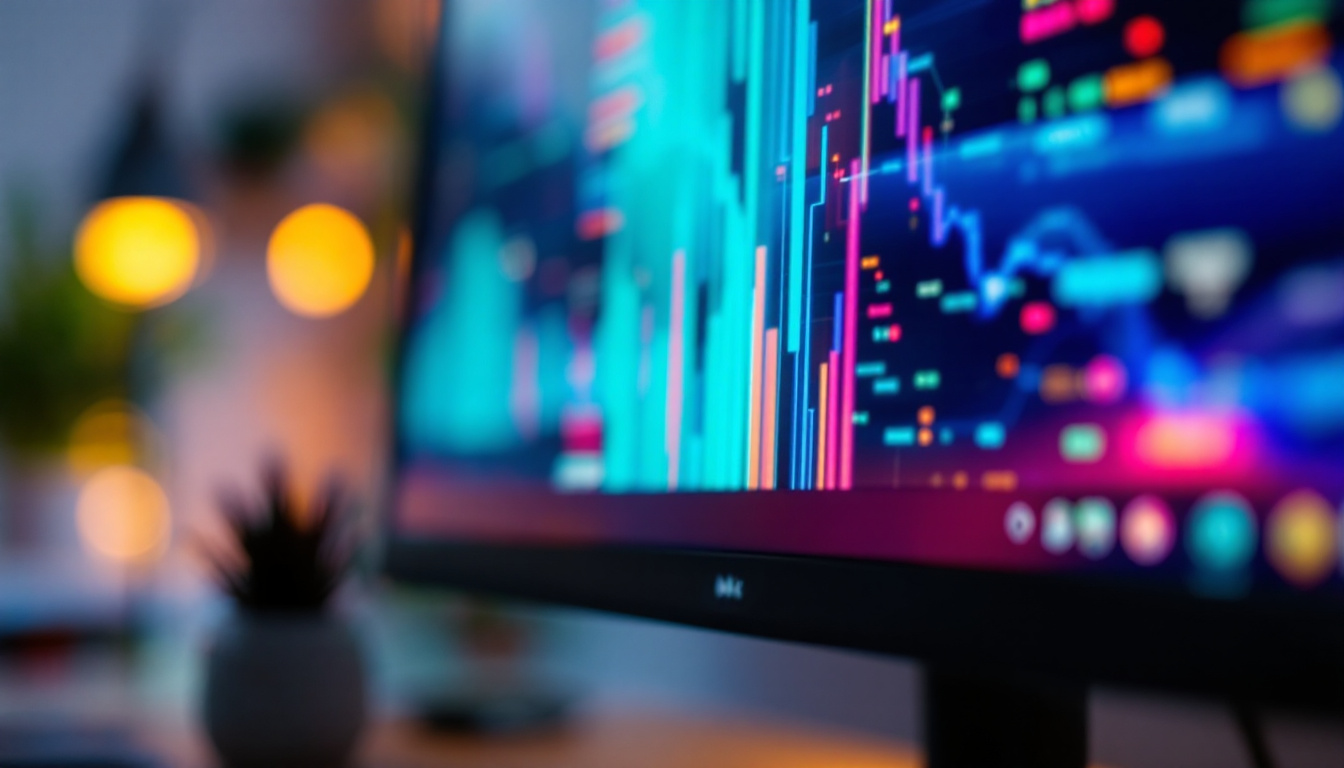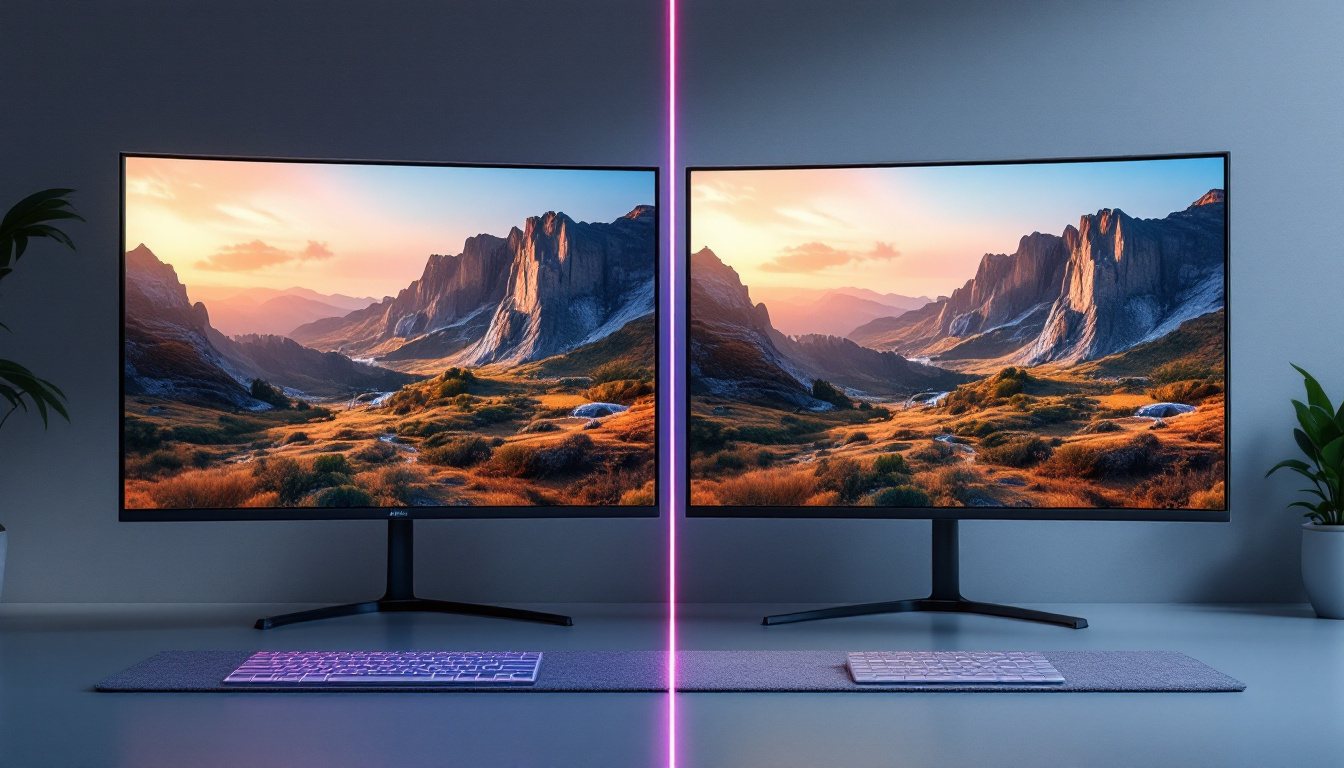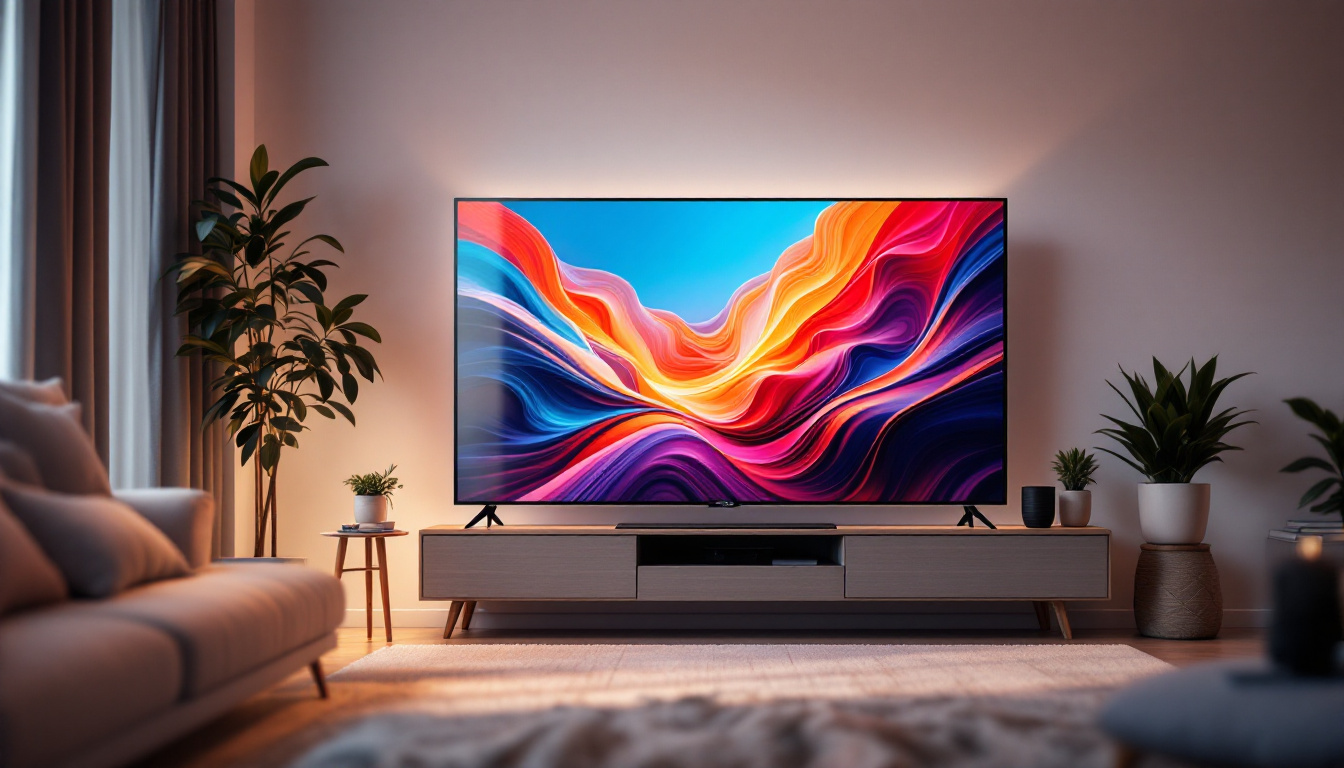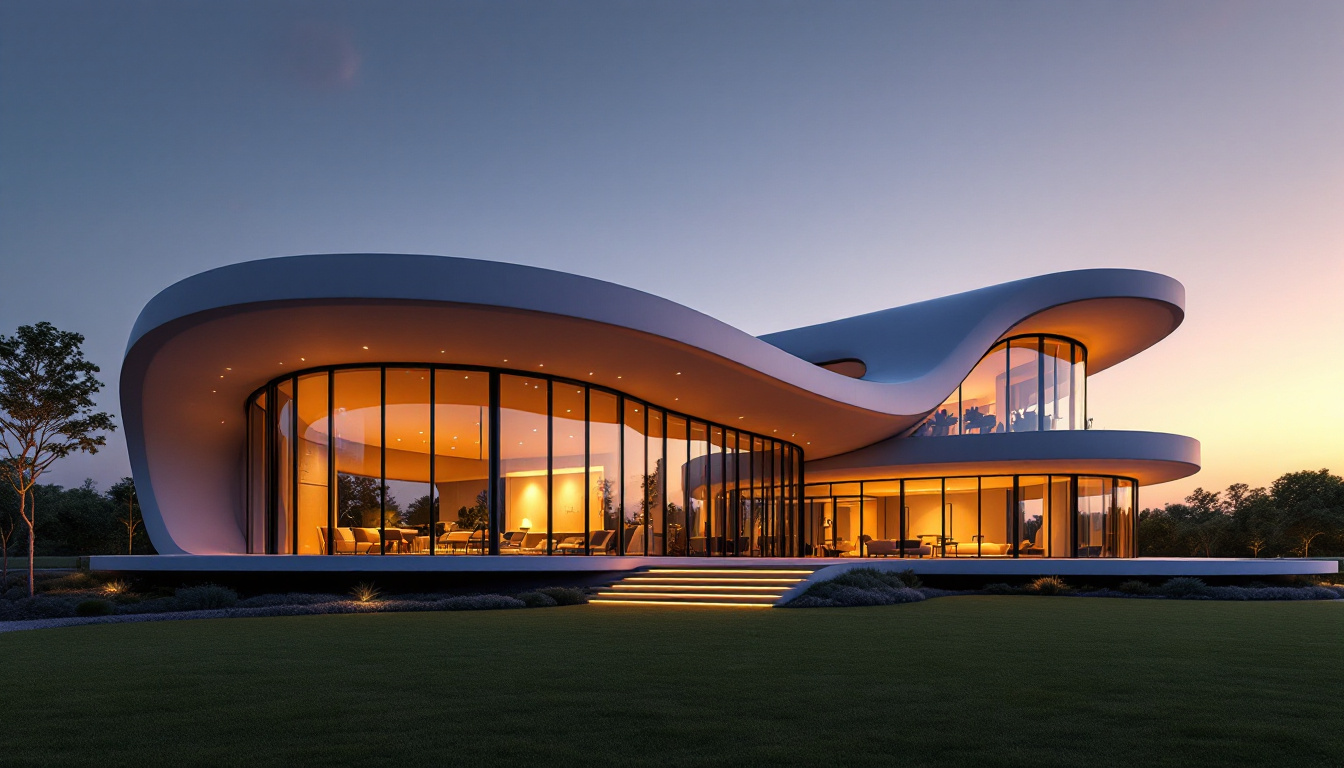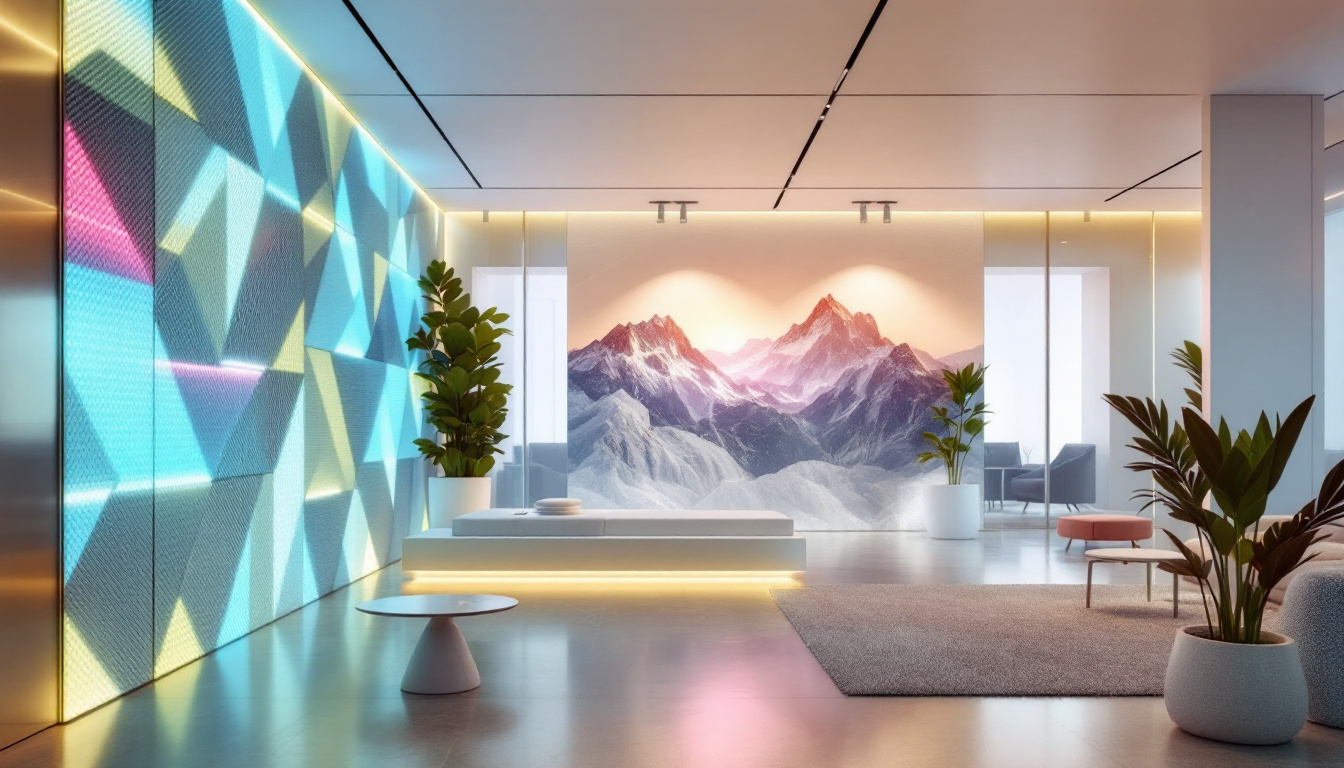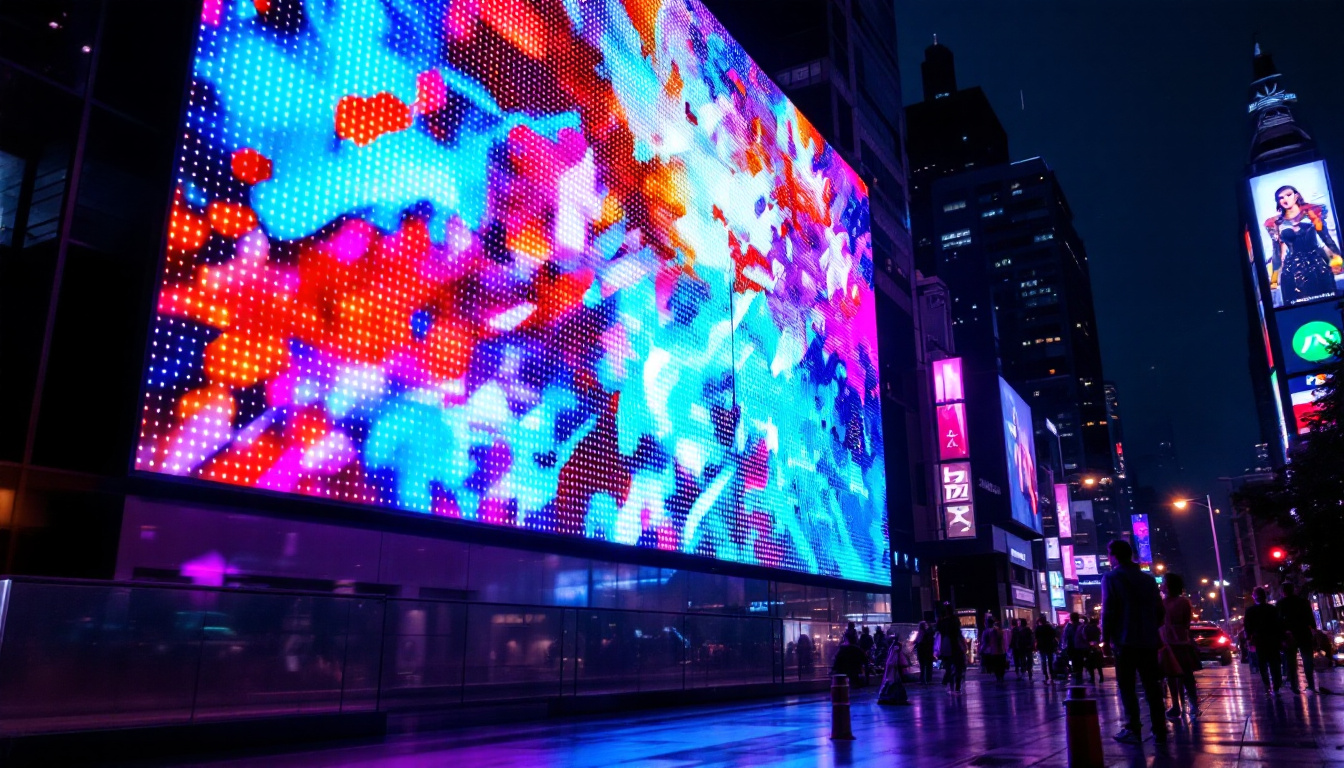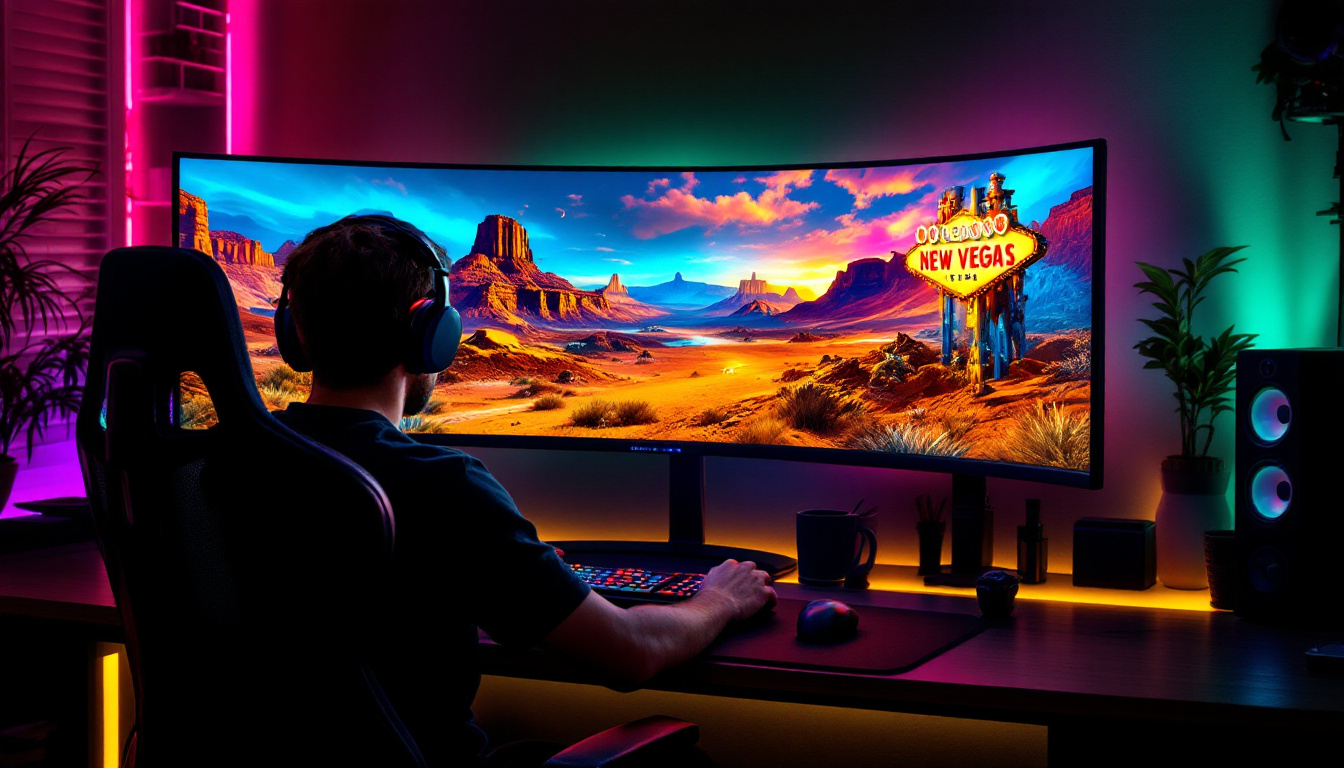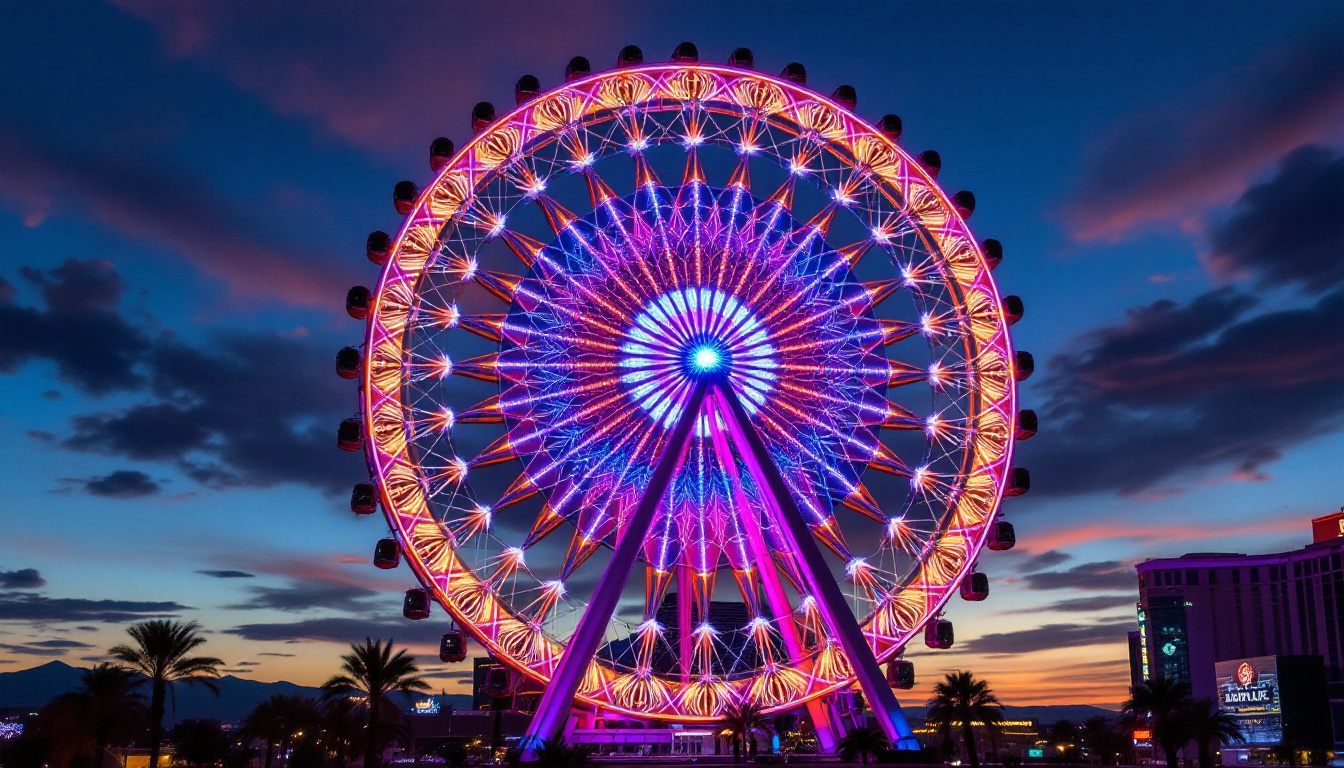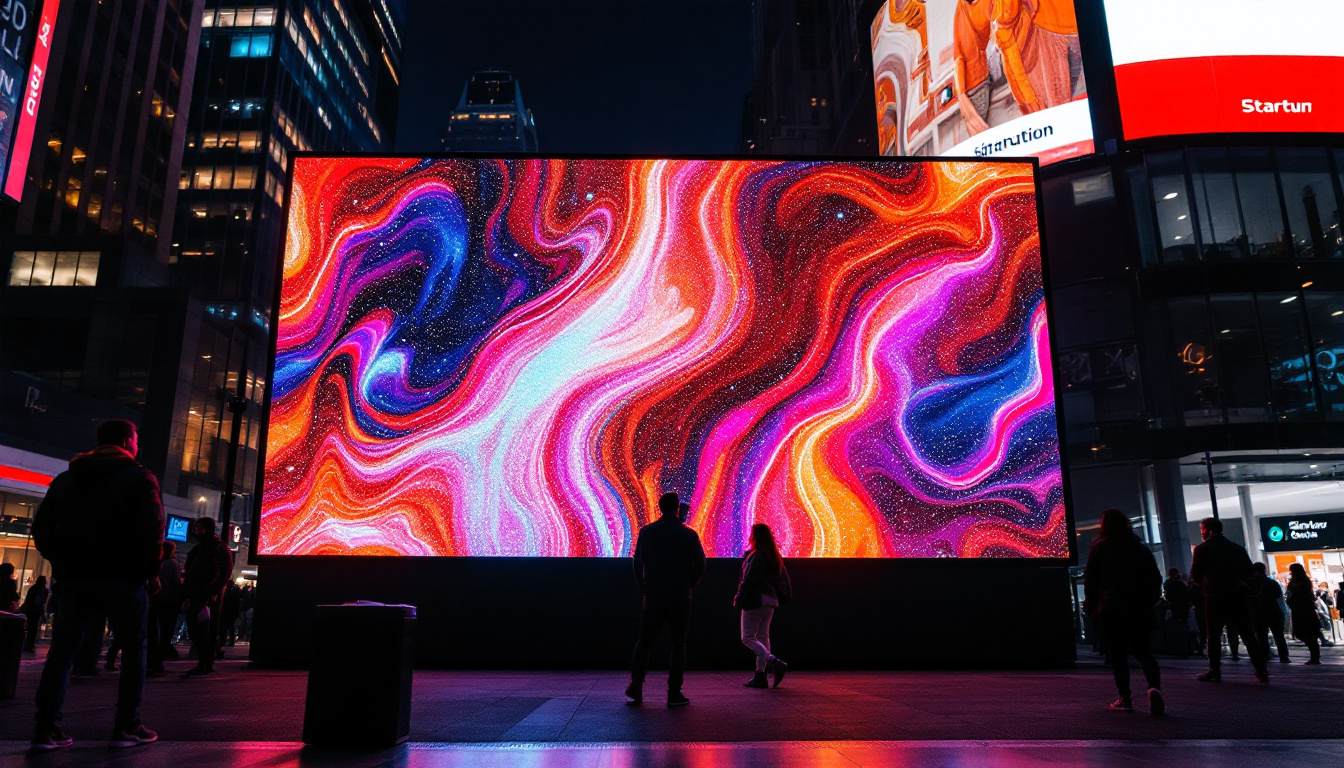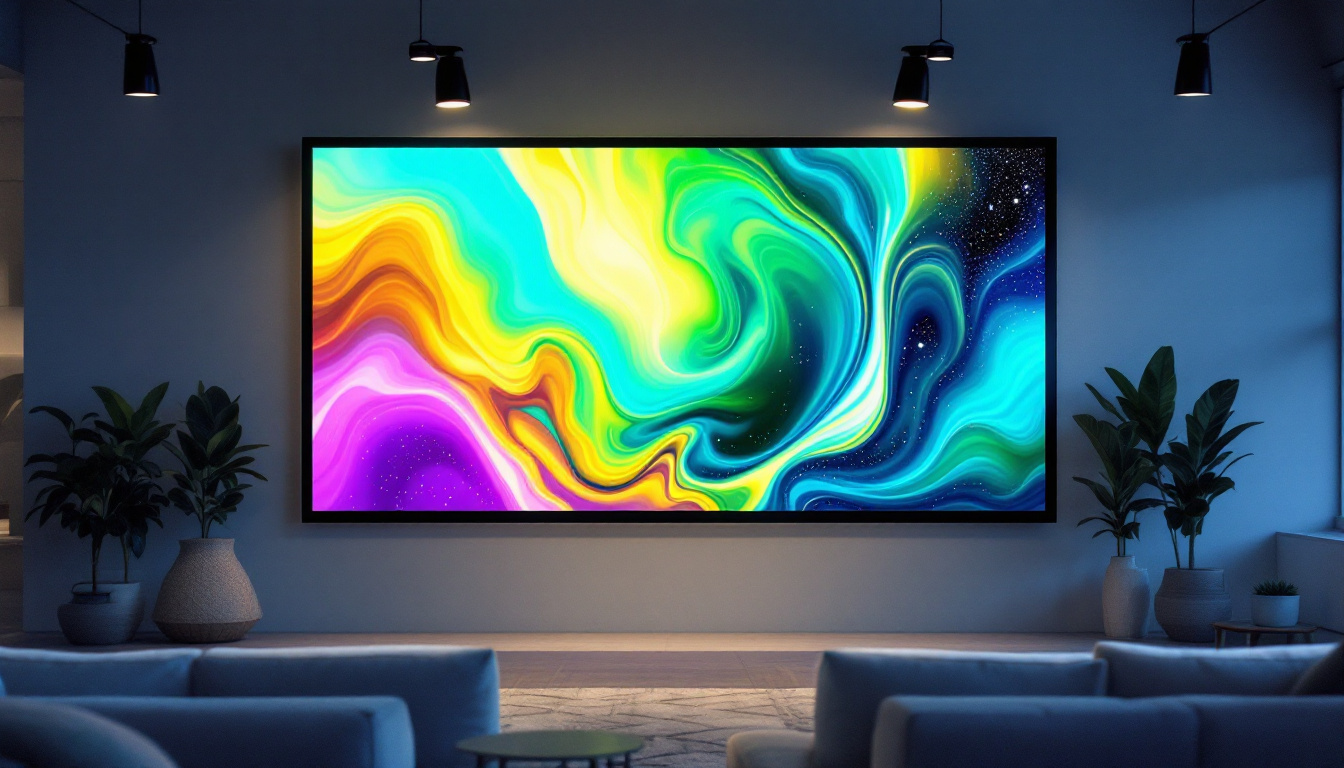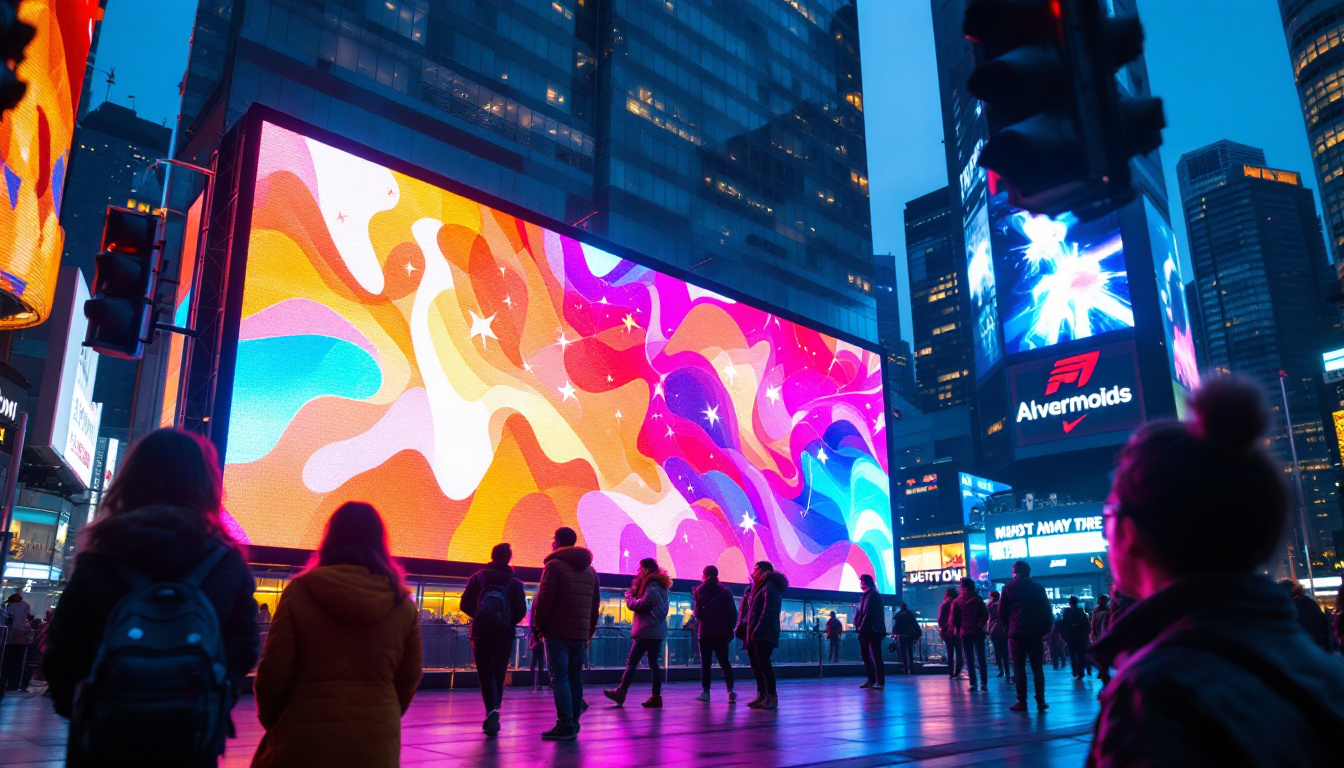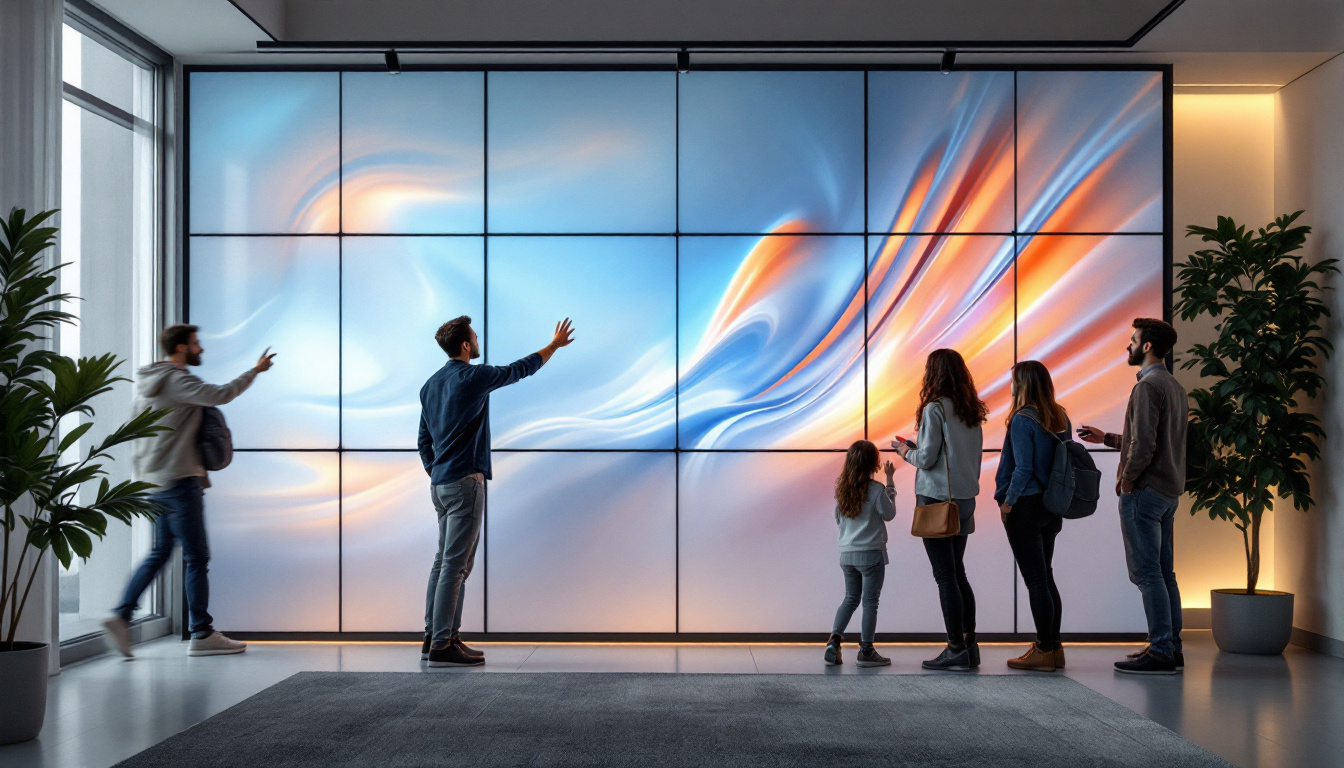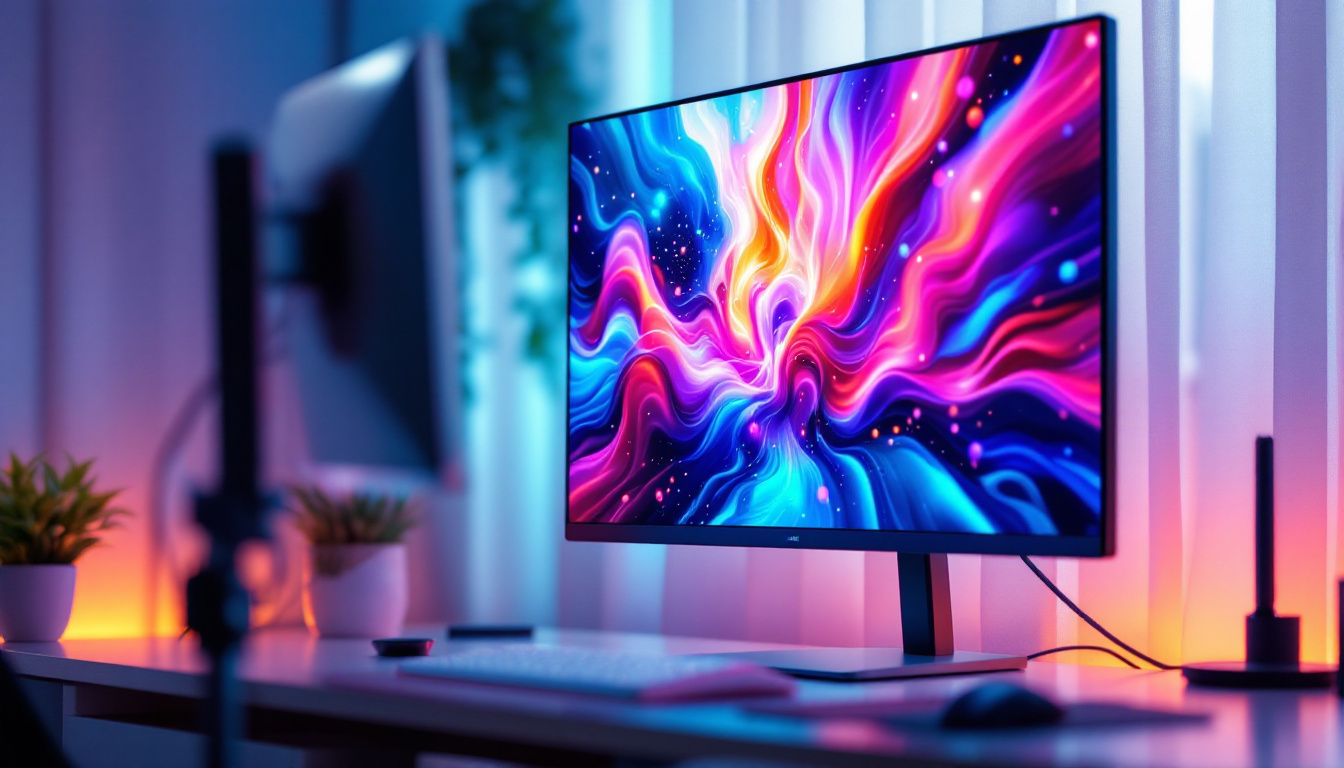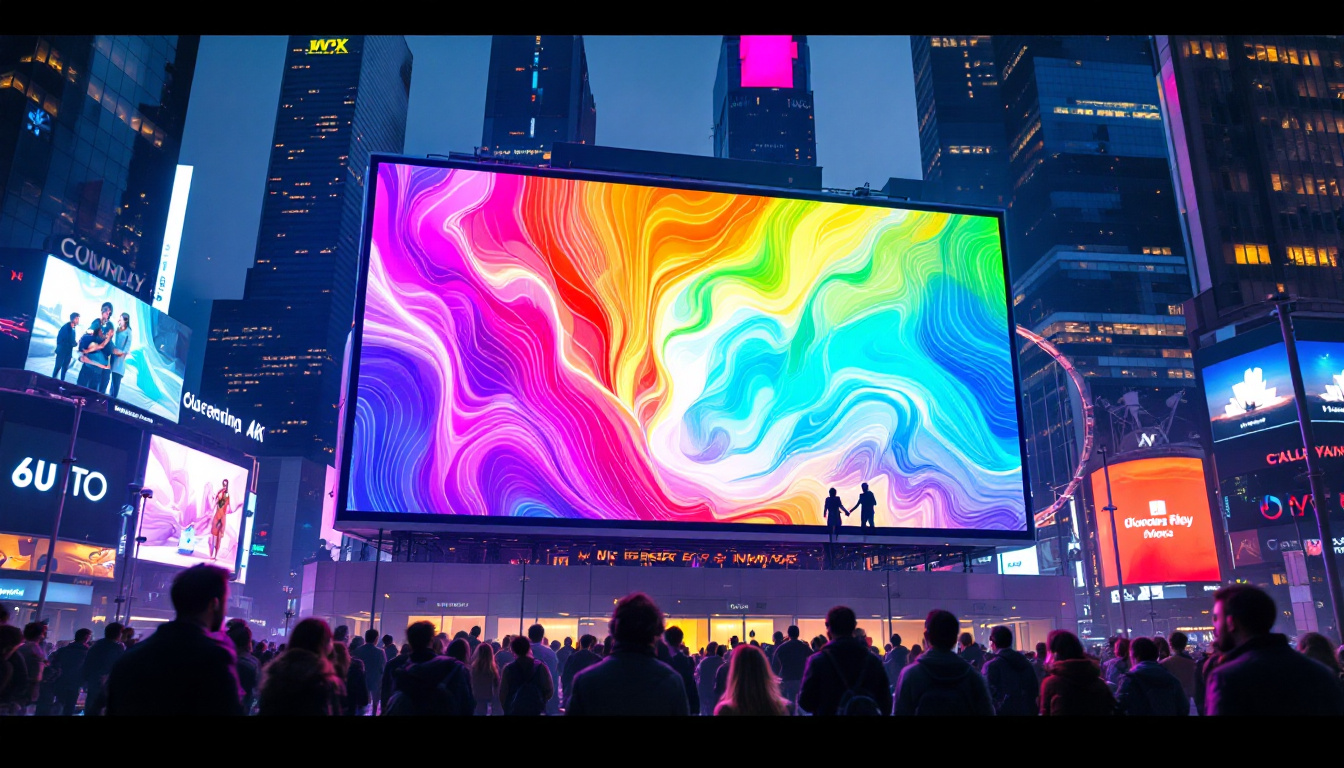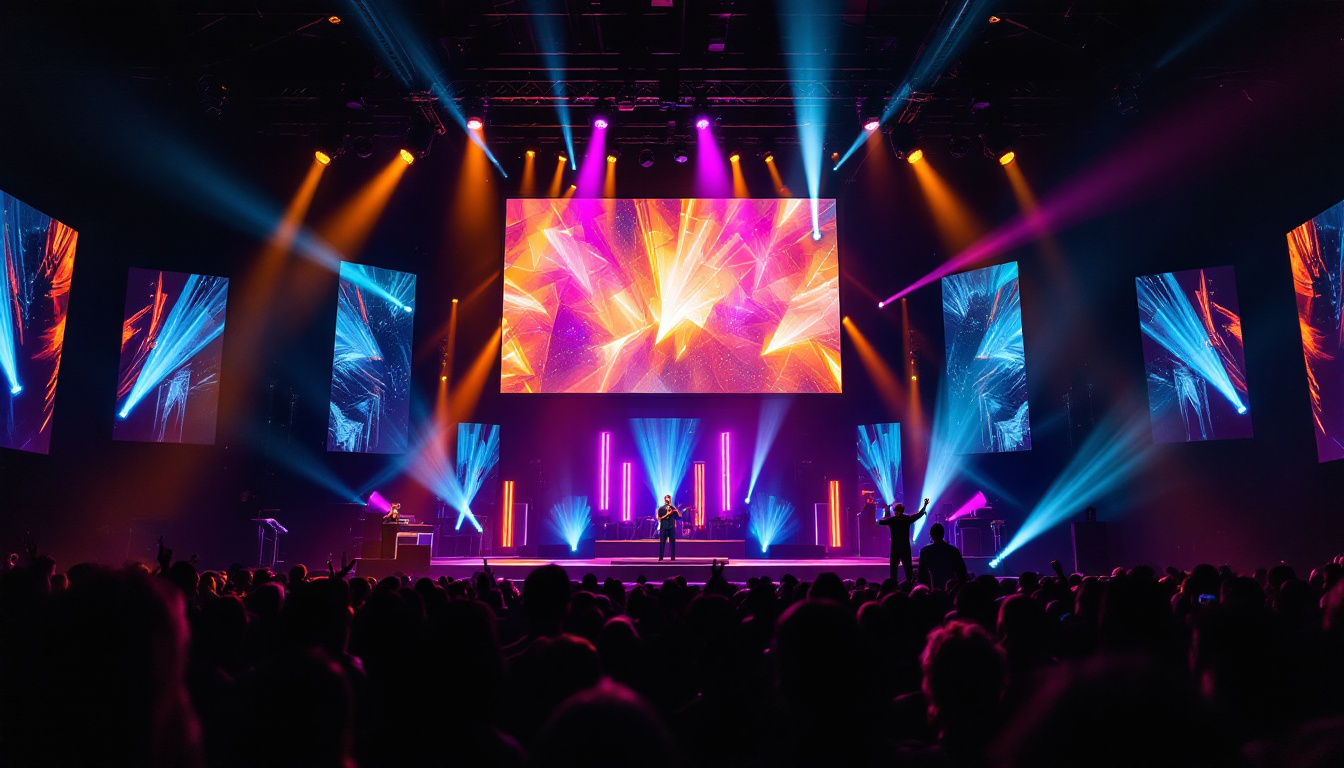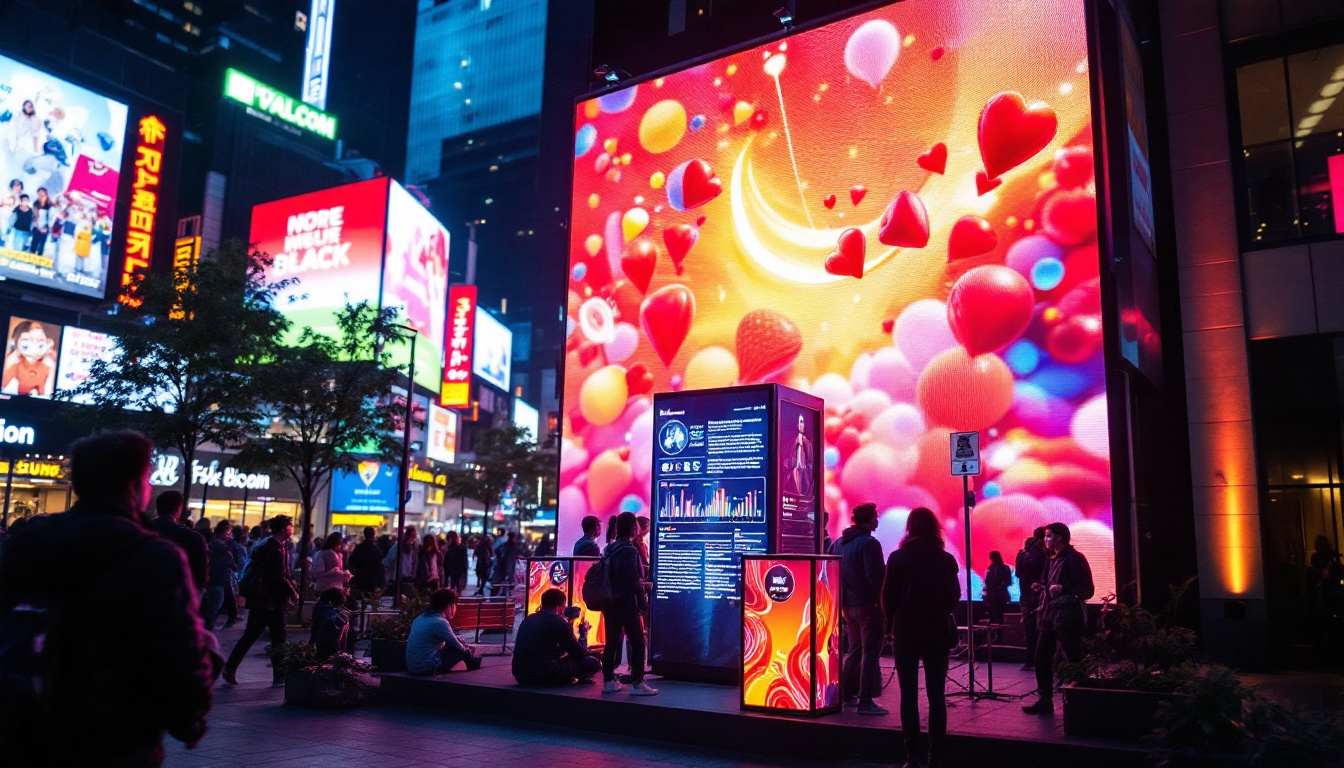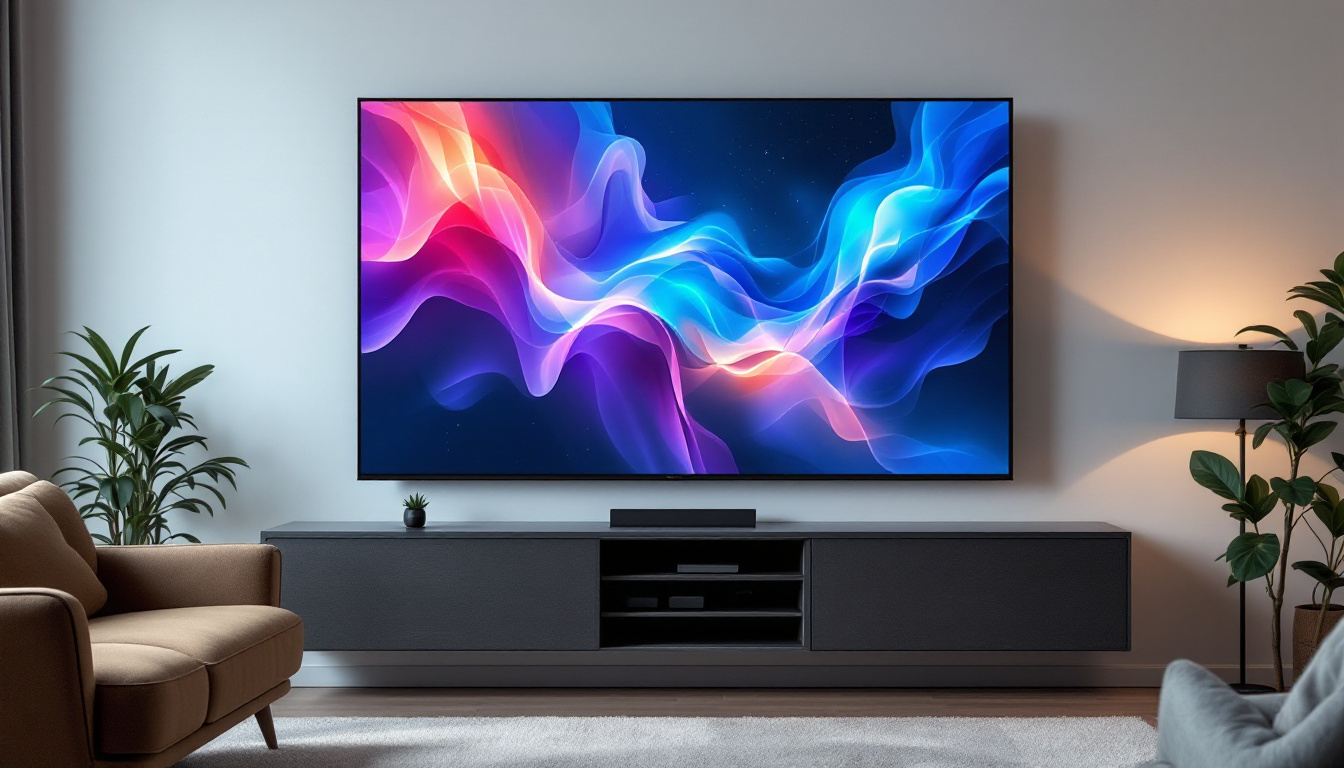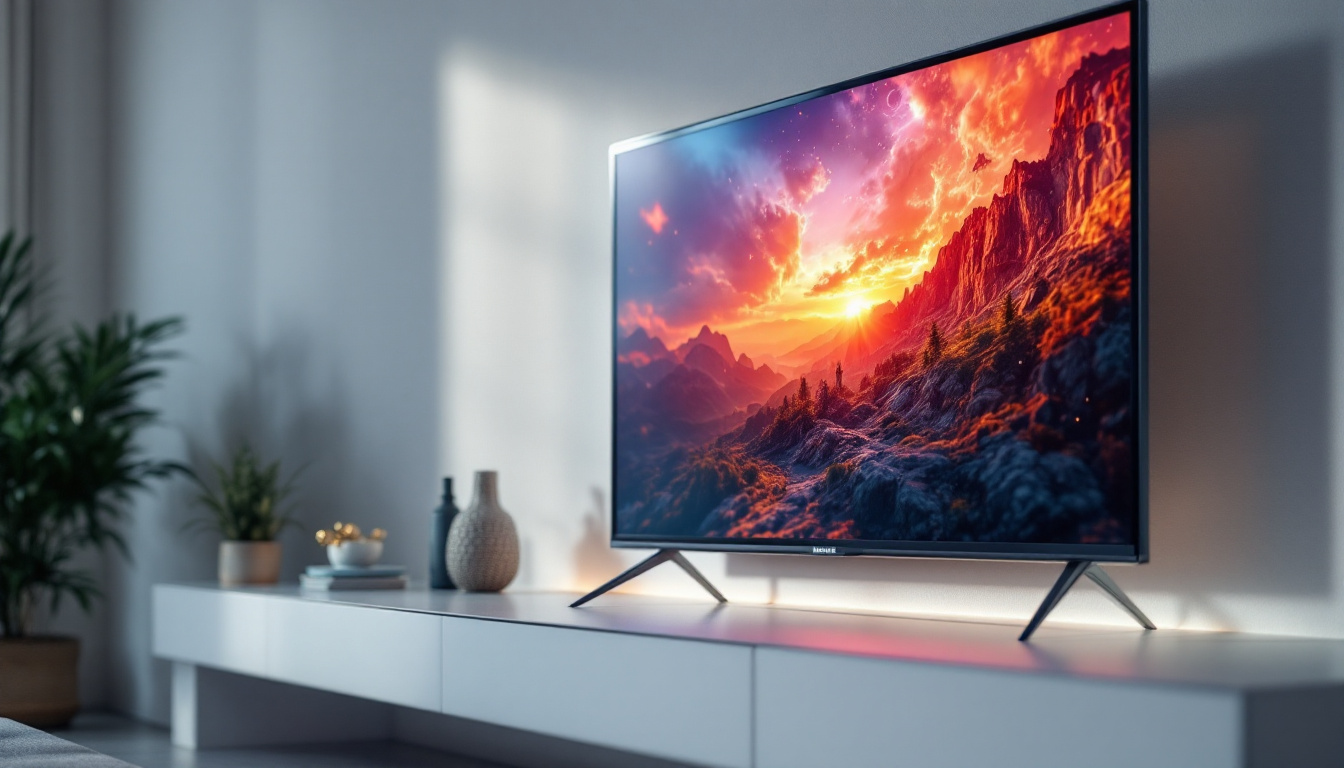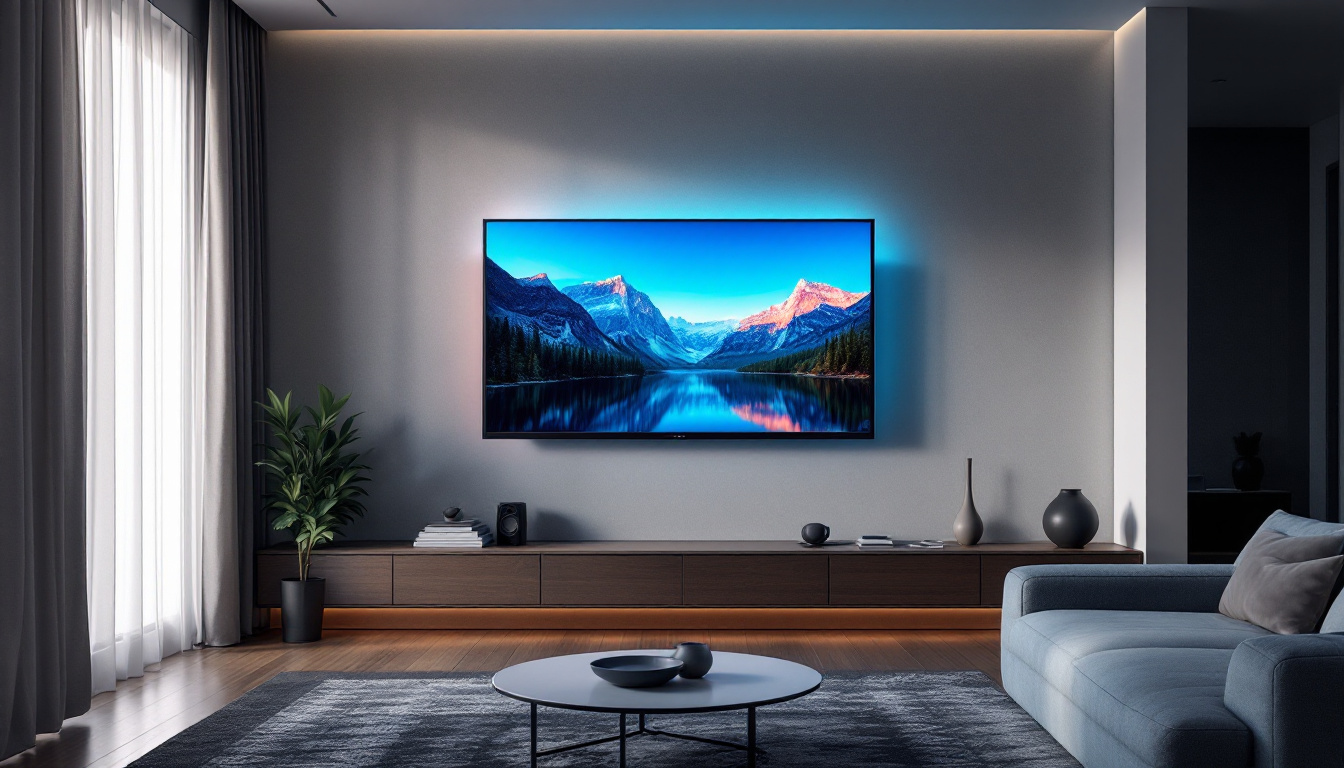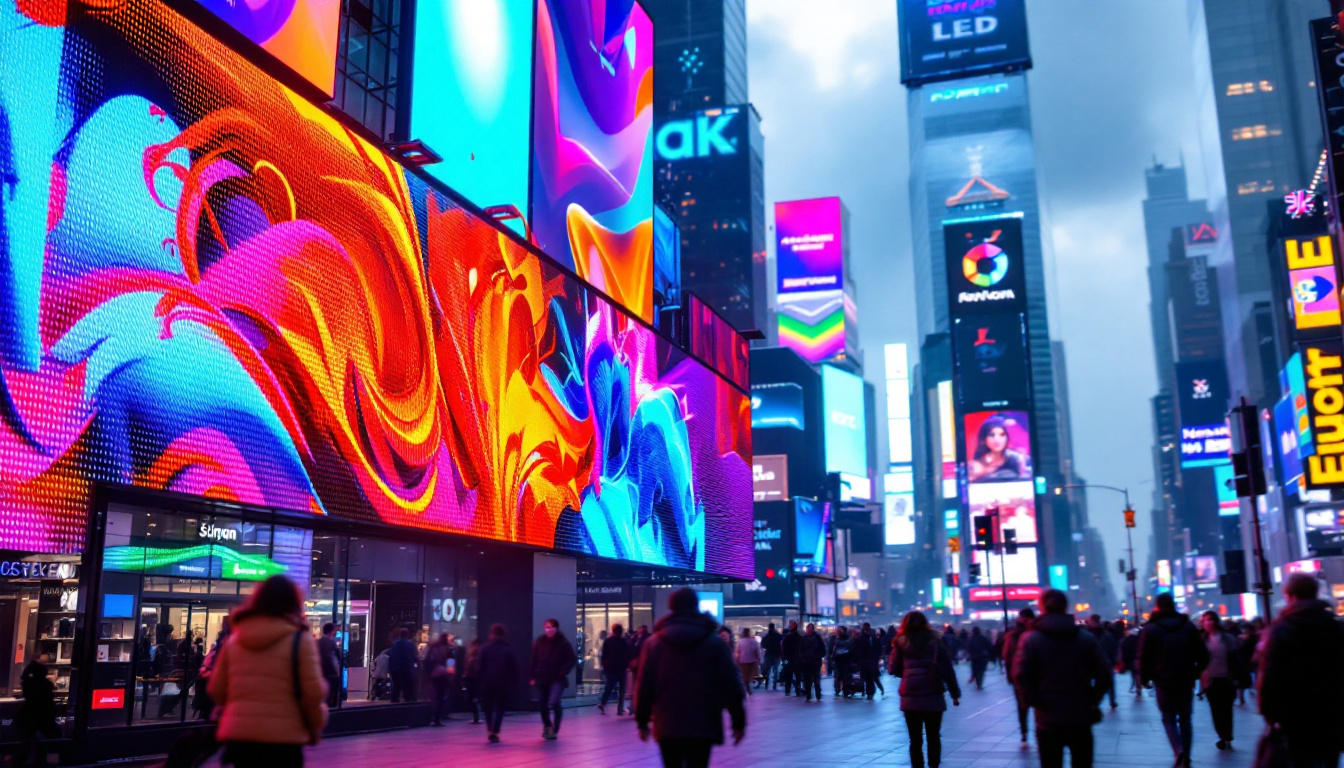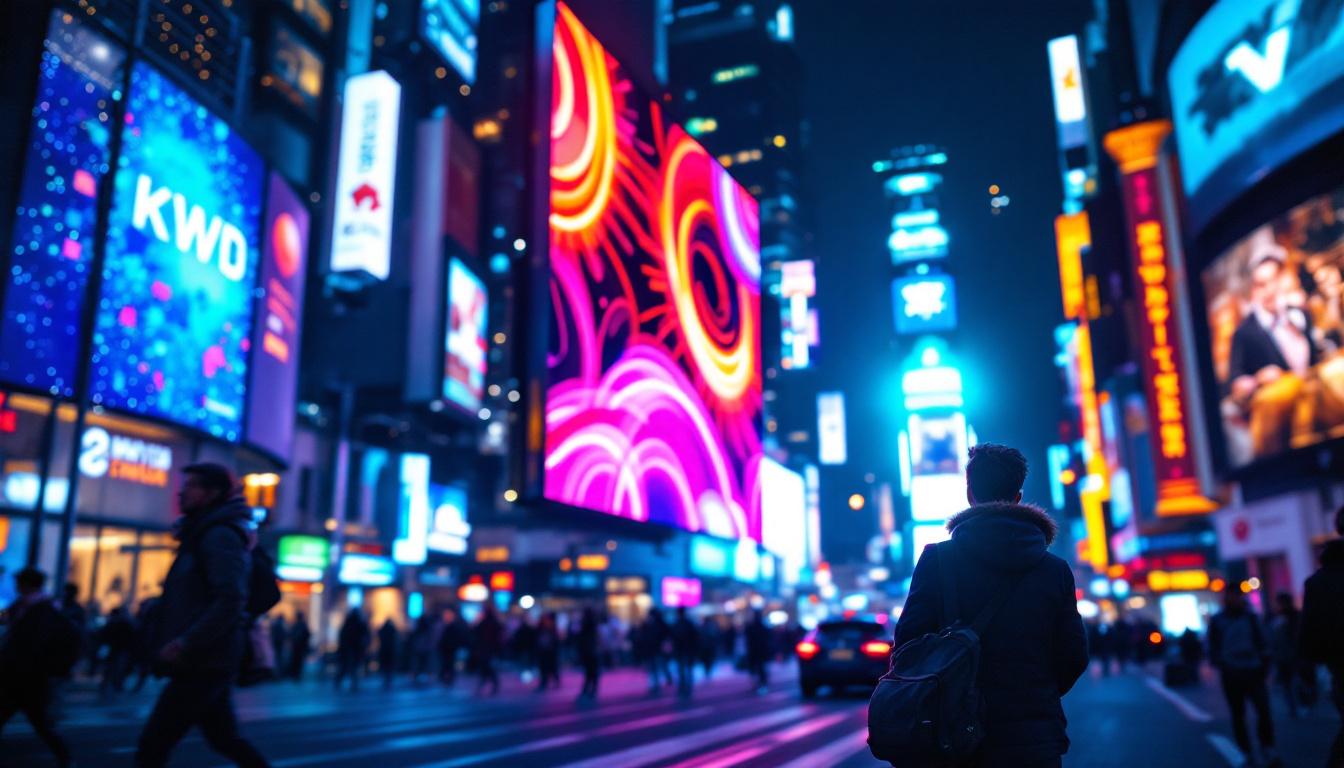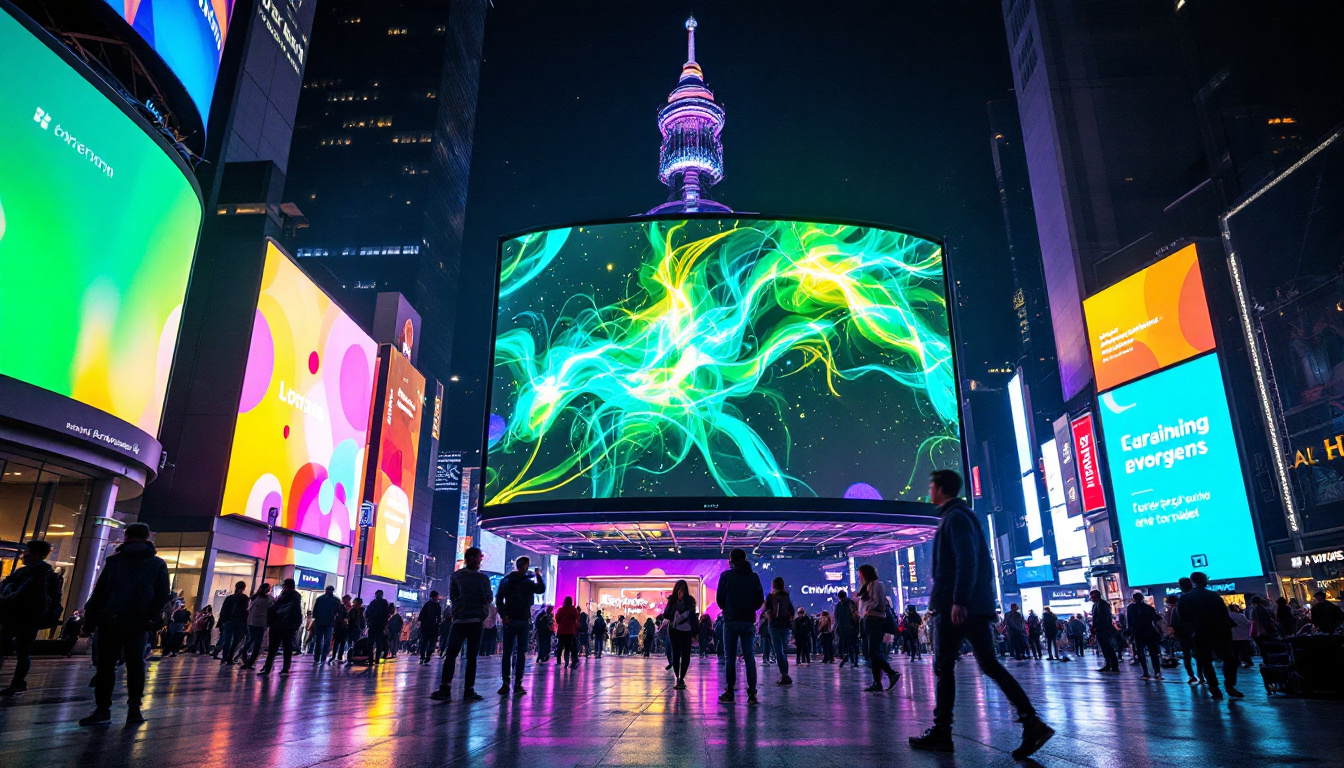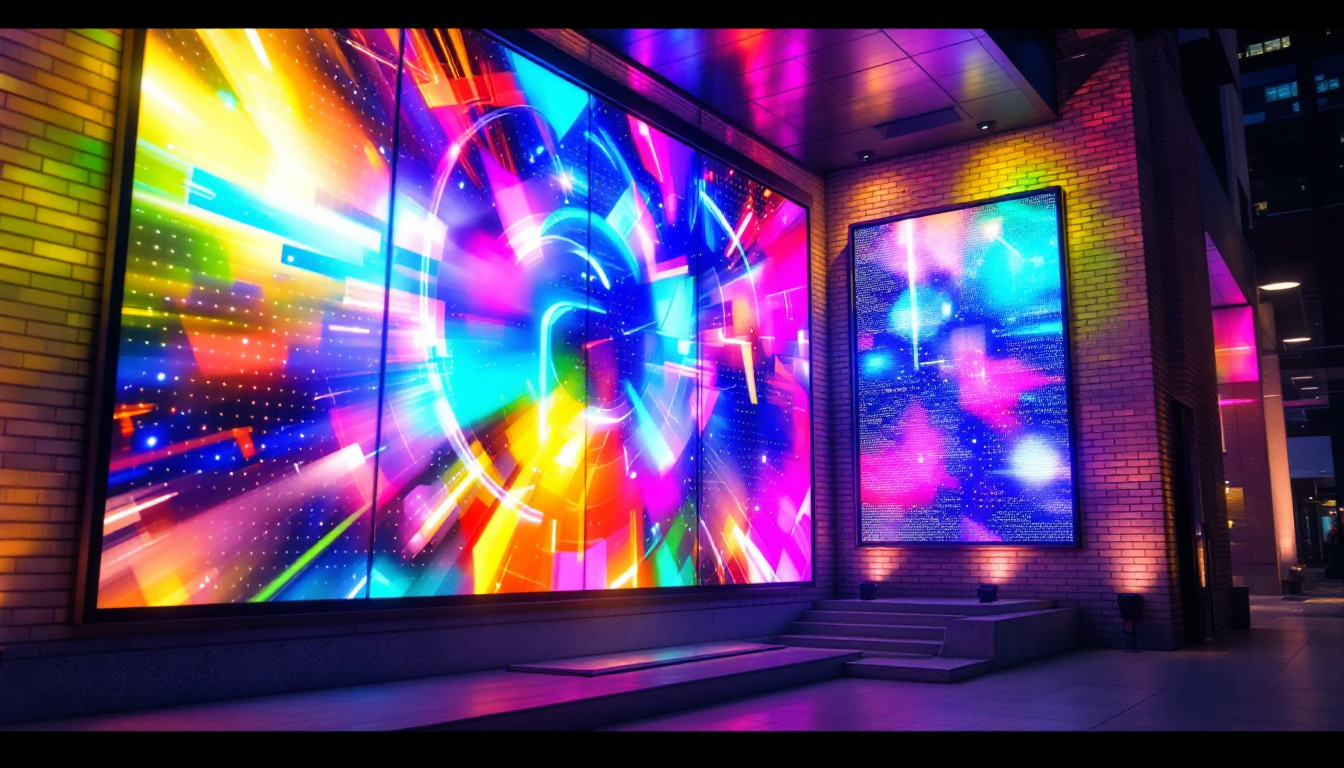In an age where technology continuously pushes the boundaries of innovation, the quest for larger and more immersive displays has become a focal point for both consumers and industries alike. The biggest computer screen in the world, a monumental LED display, exemplifies this trend, offering unparalleled visual experiences. This article delves into the intricacies of this colossal screen, exploring its specifications, applications, and the technology that drives it.
Understanding LED Technology
Light Emitting Diode (LED) technology has revolutionized the way we perceive visual content. Unlike traditional displays that rely on backlighting, LED screens utilize individual light-emitting diodes to create images. This method not only enhances brightness and contrast but also allows for thinner and more energy-efficient designs. The compact nature of LEDs enables manufacturers to create sleeker devices, which are not only aesthetically pleasing but also easier to transport and install in various settings.
How LED Displays Work
LED displays function by illuminating pixels with red, green, and blue diodes. By varying the intensity of these colors, a full spectrum of hues can be produced, resulting in vibrant and dynamic images. The arrangement of these diodes can vary, leading to different types of LED displays, such as OLED and QLED, each with its unique advantages. For instance, OLED displays are known for their exceptional color accuracy and deep blacks due to their ability to turn off individual pixels completely, while QLED displays excel in brightness and color volume, making them ideal for brightly lit environments.
In larger screens, like the biggest computer screen in the world, the arrangement and quality of these diodes are crucial. High pixel density ensures that images remain sharp, even at close distances, making them ideal for large venues and public displays. This is particularly important in settings such as stadiums or concert halls, where viewers are spread out over a large area. The technology behind LED displays continues to evolve, with advancements in pixel pitch and refresh rates, further enhancing the viewing experience for audiences.
Advantages of LED Displays
LED technology offers numerous benefits over traditional display methods. One of the most significant advantages is energy efficiency. LED screens consume less power, which is particularly beneficial for large installations that operate continuously. Additionally, they provide superior brightness, making them suitable for outdoor environments where sunlight can wash out other types of displays. This capability is not only advantageous for advertising and public information displays but also for event organizers who need reliable visibility regardless of the time of day.
Moreover, LED displays boast longer lifespans compared to their LCD counterparts. This durability translates to lower maintenance costs and reduced waste, aligning with the growing emphasis on sustainability in technology. As consumers become more environmentally conscious, the longevity of LED technology becomes a compelling selling point. Furthermore, the ability to recycle and repurpose old LED components contributes to a circular economy, minimizing the environmental impact associated with electronic waste. As the demand for greener technologies continues to rise, LED displays stand at the forefront of innovation, paving the way for a more sustainable future in visual technology.
The Largest LED Screen in the World
The title of the biggest computer screen in the world is held by a remarkable LED display that has set new standards in size and technology. Located in a prominent city, this screen is not only a technological marvel but also a centerpiece for entertainment and advertising.
Specifications of the Colossal Display
This enormous LED screen stretches over several thousand square feet, making it visible from great distances. The resolution is equally impressive, often exceeding that of standard HD displays, which ensures that images are not only large but also incredibly detailed.
Additionally, the screen features advanced refresh rates, allowing for smooth motion and vibrant colors. This is particularly important for applications such as live broadcasts, where clarity and fluidity are paramount.
Equipped with cutting-edge technology, the screen utilizes a combination of high-brightness LED modules and sophisticated software to optimize image quality in various lighting conditions. This means that whether it’s day or night, the visuals remain striking and engaging, captivating audiences regardless of the time. The display also incorporates energy-efficient components, which not only reduce operational costs but also align with the growing emphasis on sustainability in urban environments.
Location and Purpose
Strategically positioned in a high-traffic area, the screen serves multiple purposes. It is a hub for advertising, entertainment, and public announcements, drawing the attention of passersby and creating a dynamic urban atmosphere. The ability to display high-quality video content makes it an attractive platform for brands looking to engage with consumers in innovative ways.
Furthermore, the screen often hosts live events, concerts, and sports broadcasts, transforming the surrounding area into a vibrant social space. This multifunctionality is a testament to the versatility of modern LED technology.
In addition to commercial use, the screen plays a vital role in community engagement. Local artists and filmmakers are often given the opportunity to showcase their work, fostering a sense of community pride and cultural expression. The display has become a canvas for creative storytelling, where narratives from diverse backgrounds can be shared with a broad audience. This not only enriches the cultural fabric of the city but also encourages interaction among residents and visitors alike, making it a true landmark of modern urban life.
Applications of Large LED Displays
The applications of large LED displays extend far beyond mere aesthetics. They have become integral to various industries, enhancing communication, entertainment, and advertising strategies.
Advertising and Marketing
In the realm of advertising, large LED screens have become invaluable assets. Their ability to capture attention with bright colors and dynamic content makes them ideal for marketing campaigns. Brands can showcase their products in a visually striking manner, often leading to increased consumer engagement.
Moreover, these displays allow for real-time updates, enabling advertisers to change content based on time of day, audience demographics, or current events. This flexibility ensures that marketing efforts remain relevant and impactful.
Entertainment and Events
Large LED screens have transformed the entertainment landscape. They are frequently used in concert venues, sports arenas, and festivals to enhance the audience experience. By providing close-up views of performances or events, these screens create a more immersive atmosphere.
Additionally, they serve as platforms for interactive experiences, allowing audiences to engage with content in new and exciting ways. This interactivity can range from live polls during events to augmented reality experiences that blend the physical and digital worlds.
The Future of LED Display Technology
As technology continues to evolve, the future of LED displays looks promising. Innovations are on the horizon, aiming to enhance performance, reduce costs, and expand applications.
Advancements in Resolution and Size
Future LED displays are expected to feature even higher resolutions, making them suitable for an increasingly detail-oriented audience. MicroLED technology, which uses microscopic LEDs to create images, is one such advancement that promises to deliver exceptional clarity and contrast.
Moreover, as manufacturing processes improve, the cost of producing large LED screens is likely to decrease, making them more accessible for various applications, from small businesses to large corporations.
Integration with Smart Technology
The integration of LED displays with smart technology is another exciting development. As the Internet of Things (IoT) continues to expand, LED screens will likely become more interconnected, allowing for seamless communication between devices and real-time data sharing.
This connectivity can enhance user experiences, enabling personalized content delivery based on individual preferences or behaviors. It also opens up new avenues for data visualization, making complex information more digestible and engaging.
Challenges and Considerations
Despite the numerous advantages of large LED displays, there are challenges and considerations that stakeholders must address. Understanding these aspects is crucial for maximizing the potential of this technology.
Cost and Installation
The initial investment for large LED displays can be substantial. Costs encompass not only the display itself but also installation, maintenance, and ongoing content creation. Businesses must weigh these factors against the potential return on investment, particularly in advertising and entertainment applications.
Additionally, proper installation is vital to ensure optimal performance. Factors such as location, angle, and environmental conditions can significantly impact the effectiveness of the display. Engaging professional services for installation can mitigate these challenges.
Environmental Impact
While LED technology is generally more energy-efficient than traditional displays, the environmental impact of large-scale installations should not be overlooked. The production and disposal of electronic components contribute to electronic waste, which poses significant environmental challenges.
To address these concerns, manufacturers are increasingly focusing on sustainable practices, such as using recyclable materials and implementing energy-efficient designs. Consumers and businesses alike should prioritize these considerations when investing in LED technology.
Conclusion
The biggest computer screen in the world represents a remarkable achievement in LED display technology, showcasing the potential for larger-than-life visual experiences. As advancements continue to emerge, the applications and benefits of these displays will only expand, transforming industries and enriching lives.
From advertising to entertainment, large LED screens have become essential tools for communication and engagement. However, stakeholders must navigate the associated challenges, ensuring that the benefits outweigh the costs and environmental impacts.
As we look to the future, the evolution of LED technology promises exciting possibilities, paving the way for even more innovative and immersive experiences. The journey of the biggest computer screen is just the beginning, and the world eagerly anticipates what lies ahead in the realm of visual technology.
Discover the Future of Visual Technology with LumenMatrix
Ready to elevate your visual experience and bring your brand’s message to life? LumenMatrix is at the forefront of LED display innovation, offering a diverse range of solutions tailored to your unique needs. From Indoor and Outdoor LED Wall Displays to specialized options like Vehicle, Sports, and Floor LED Displays, our products are designed to captivate and engage. Embrace the future of visual communication with our Custom, All-in-One, and Transparent LED Displays. Check out LumenMatrix LED Display Solutions today and join the revolution in digital signage, where clarity and impact go hand in hand.

